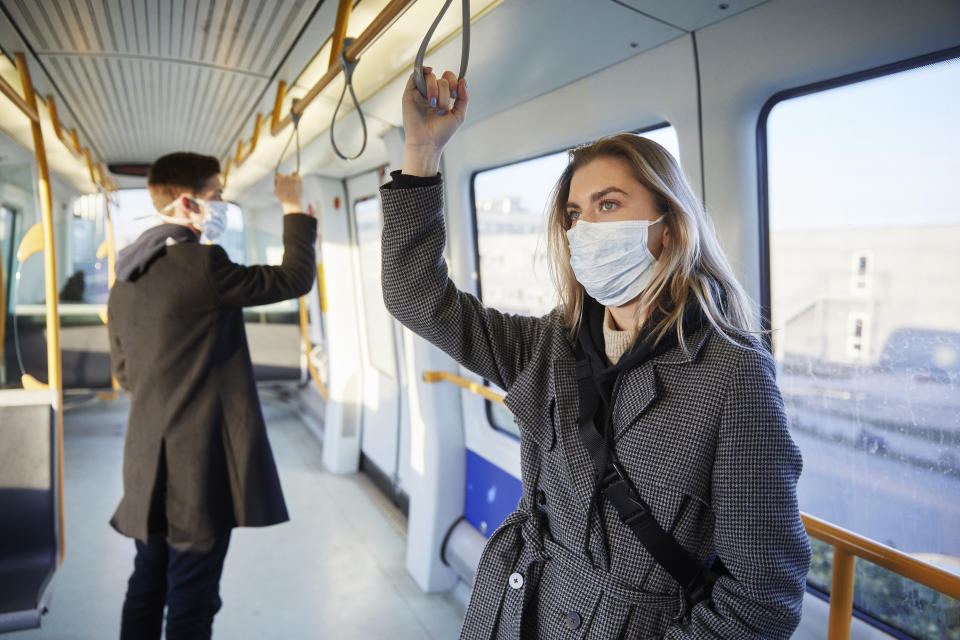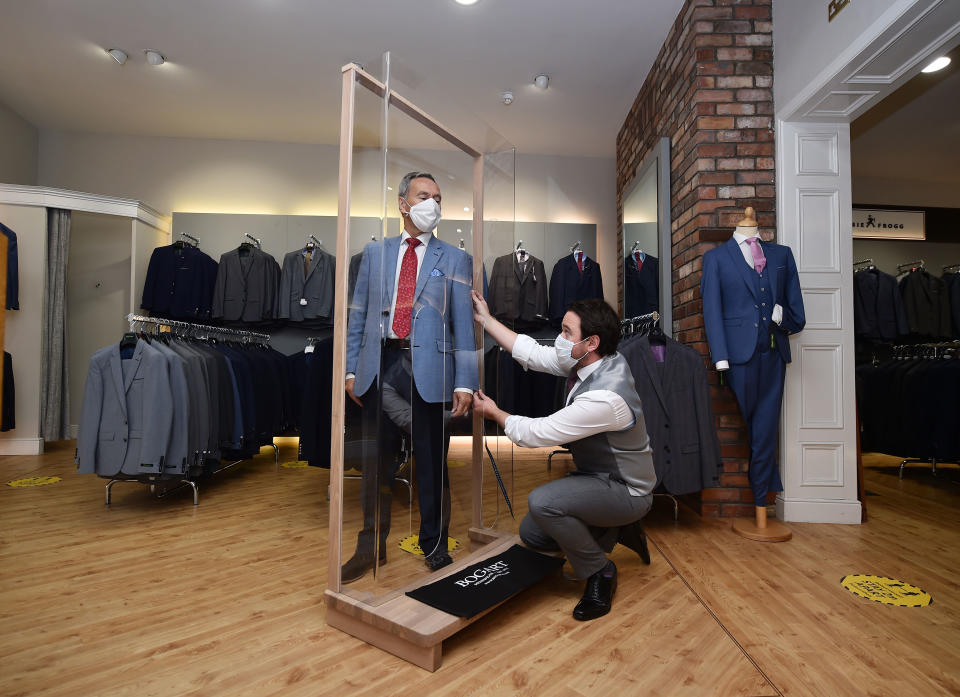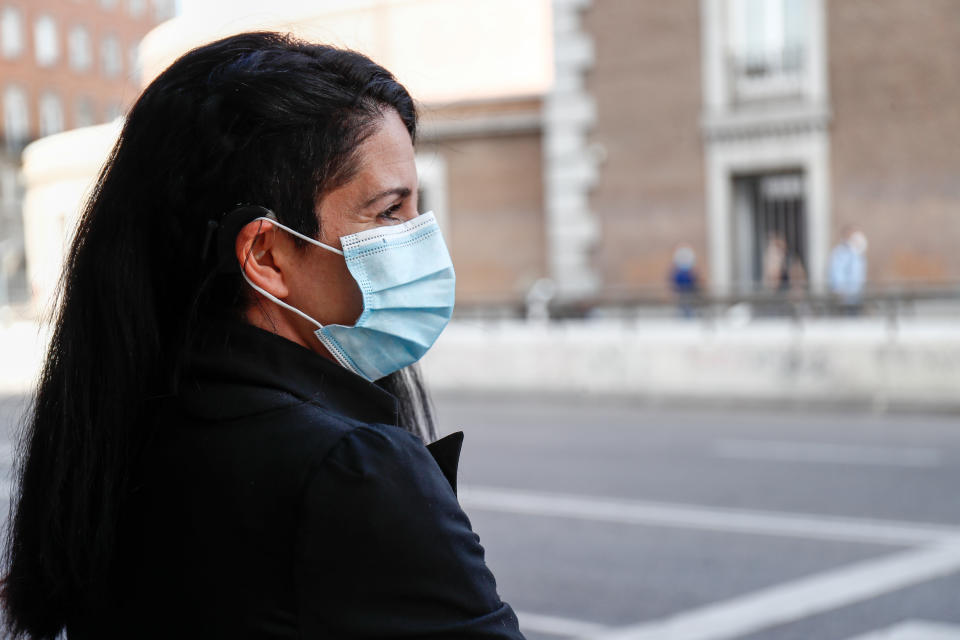Coronavirus: Is it safe to be closer than two metres?
With the UK gradually coming out of lockdown, officials have stressed the importance of maintaining social distancing.
The World Health Organization recommends people keep at least 1m (3.2ft) apart when meeting up with those outside their home – advice adopted by China, Denmark and France.
Despite the official guidance, the UK government is sticking with a 2m (6.5ft) distance.
Pub and restaurant owners have warned their businesses will collapse unless people are permitted to mingle closer together, allowing for more customers.
Boris Johnson has promised to keep the 2m rule under “constant review”, but – for now – it stands.
Early research suggests the coronavirus is mild in four out of five cases, however, it can trigger a respiratory disease called COVID-19.

Is it safe to reduce the two metre social distancing rule?
The coronavirus mainly spreads face to face via infected droplets expelled in a cough or sneeze.
It can then be inhaled through the nose or mouth, or enter via the eyes – usually if someone rubs a contaminated hand on their face.
The further away an individual stands from a patient, the lower their risk of catching the coronavirus.
Two metres is generally accepted as safer than one metre, three metres safer than two metres, and so on.
A study published in the prestigious medical journal The Lancet found the risk of catching the coronavirus at 1m is around 13%, but only 3% beyond that.
For every extra metre up to 3m, the risk is further reduced by half, the research suggests.
“It has long been established the droplets can be carried over a distance of 1m to 2m, with the larger droplets falling out [due to gravity] in around 1m and the smaller droplets (similar to the diameter of a human hair) in around 2m,” said Professor Jonathan Reid from the University of Bristol.
“So, the further you stand away from someone, the smaller the fraction of droplets you are exposed to when someone sneezes or coughs in your direction, and the less likely you are to come into contact with the virus.”
It is worth noting standing at 2m does not eliminate the odds of infection entirely.
“One metre only prevents you from being exposed to the largest of droplets, 2m reduces your exposure, but doesn’t make it zero risk,” said Professor Reid.
“In fact, droplets smaller than the diameter of a human hair can be carried over more than 2m, and the very smallest droplets – often referred to as aerosols – can remain airborne for minutes or hours in a room and travel over larger distances.”
There appears to be no clear answer on the “optimal” social distance.
The force someone speaks, how heavily they breathe and the humidity of the area all influence the risk of transmission.
“We also don’t know how much virus someone needs to be exposed to to get COVID-19 and this also then depends on how long they may be near someone,” said Professor Reid.

‘There is elegance in the simplicity of the two metre message’
Scientists advising the UK government say the risk of spending six seconds 1m away from a patient is the same as spending one minute at 2m.
If someone is coughing, being 2m away carries the same risk as talking face to face to an infected individual without a cough for 30 minutes.
Being indoors versus outdoors also raises questions.
Scientists from Hokkaido University in Japan followed up the contacts of 110 people with the coronavirus.
They found the risk of the infection being passed on was nearly 19 times greater inside than outside.
Although far from perfect, the 2m rule may be a reasonably safe, easy to understand message.
“Assessing risk is difficult,” said Professor Reid.
“It makes sense to be cautious until we have more information”.
Narrowing social distancing may mean other preventative measures need to be introduced, like making face coverings mandatory when outdoors, not just on public transport.
“As an engineer, it would absolutely make sense to me that if you can’t maintain 2m distancing at all times, then consider other factors which influence risk and introduce some other measures,” said Dr Shaun Fitzgerald from the University of Cambridge.
“The 2m guidance rule in the way it’s been set out has been really helpful, because there is elegance in the simplicity of a message.
“Just saying 2m is something we can all relate to, we can all understand.”

What is the coronavirus?
The coronavirus is one of seven strains of a virus class that are known to infect humans.
Others cause everything from the common cold to severe acute respiratory syndrome (Sars), which killed 774 people during its 2002/3 outbreak.
Since the coronavirus outbreak was identified at the end of 2019, more than 7.5 million cases have been confirmed worldwide, according to Johns Hopkins University.
Of these cases, over 3.5 million are known to have recovered.
Globally, the death toll has exceeded 421,500.
Although the coronavirus mainly spreads in coughs and sneezes, there is also evidence it can be transmitted in faeces and survive on surfaces.
Symptoms include fever, cough and a loss of taste or smell.
The coronavirus has no “set” treatment, with most patients naturally fighting it off.
Those requiring hospitalisation are given “supportive care”, like ventilation, while their immune system gets to work.
Officials urge people ward off infection by washing their hands regularly.
Coronavirus: what happened today
Click here to sign up to the latest news, advice and information with our daily Catch-up newsletter
Read more about COVID-19
How to get a coronavirus test if you have symptoms
How easing of lockdown rules affects you
In pictures: How UK school classrooms could look in new normal
How public transport could look after lockdown
How our public spaces will change in the future
Help and advice
Read the full list of official FAQs here
10 tips from the NHS to help deal with anxiety
What to do if you think you have symptoms



